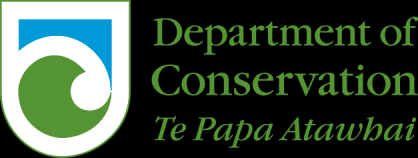
OIAD-1555
16 November 2021
Bridget Percy
[FYI request #17344 email]
Tēnā koe Bridget
Thank you for your Official Information Act request to the Department of Conservation (DOC),
received on 26 October 2021, in which you asked:
1. In 2018 a Pukaha kiwi census indicated that there were 18 kiwi living in the Pukaha Forest
and the acoustic recordings done in 2020 indicated that there were 12 live kiwi in the
Pukaha Forest following the loss of 6 kiwi during lockdown earlier that year.
Please answer my question 'How many unmonitored kiwi (of the 154 that have been bred
at, or brought into Pukaha Mt Bruce since 2005) are known to be living in the Pukaha
Forest?' (as the 114 kiwi calls mentioned in the OIA response dated 26 October 2021 gives
no indication of how many different kiwi made these calls).
2. How many kiwi under 1 year of age are there estimated to be currently in the Pukaha Forest
which are too young to call?
3. In question 2 of the OIA response dated 26 October 2021 Jack Mace stated that 'incursions
are very rare' and that they 'are detected quickly with cameras'. As the Pukaha Forest is
942 ha in size and the boundary is not fenced nor under constant camera surveillance
where are the cameras positioned that pick up these 'incursions' and how many of them
are there?
From 2013 DOC began a phased handover of management of conservation activities at Pūkaha to
the Pūkaha Board. The board (which incorporates a DOC representative) now manages the staff,
and oversees the captive management and restoration work. DOC contributes funds and expertise
towards national captive management programmes.
We have liaised with Pūkaha Biodiversity Manager, Christine Reed, to provide responses to your
questions. Christine’s role is to manage Pūkaha’s forest restoration and captive breeding for
conservation programmes.
Your questions and our responses are listed below:
1. In 2018 a Pukaha kiwi census indicated that there were 18 kiwi living in the Pukaha Forest
and the acoustic recordings done in 2020 indicated that there were 12 live kiwi in the
Pukaha Forest following the loss of 6 kiwi during lockdown earlier that year.
Please answer my question 'How many unmonitored kiwi (of the 154 that have been bred
at, or brought into Pukaha Mt Bruce since 2005) are known to be living in the Pukaha
Forest?' (as the 114 kiwi calls mentioned in the OIA response dated 26 October 2021 gives
no indication of how many different kiwi made these calls).

Unmonitored kiwi are by definition not monitored, so therefore are not able to be counted.
Annual acoustic surveys are indicators of individual kiwi locations, although there is a
(small) risk of detecting the same kiwi on multiple devices. Survey locations are extensive
but not all areas of the reserve are surveyed annually.
Acoustic surveys provide sexing information for birds that are recorded. When ‘duetting’ is
heard, this is a good indication that there is a territorial breeding pair. Of the 114 kiwi calls
recorded in the April 2021 survey, 82 were from males and 32 from females. Eighteen duets
were recorded across six recorders indicating a likely minimum of six pairs. Calls from solo
male and females across a number of recorders indicate a likely minimum of a further six
birds.
2. How many kiwi under 1 year of age are there estimated to be currently in the Pukaha Forest
which are too young to call?
There are no radio transmitters presently on kiwi at Pūkaha, so the number of young birds
that would not be calling is not known.
3. In question 2 of the OIA response dated 26 October 2021 Jack Mace stated that 'incursions
are very rare' and that they 'are detected quickly with cameras'. As the Pukaha Forest is
942 ha in size and the boundary is not fenced nor under constant camera surveillance
where are the cameras positioned that pick up these 'incursions' and how many of them
are there?
Approximately 15 cameras are deployed through the reserve, although numbers vary
depending on any targeted surveys during higher incursion risk times. More cameras will
be deployed during those rare occasions. The location of cameras across the reserve vary
depending on whether they are permanent or temporarily installed during incursions.
Permanent camera locations are not disclosed publicly for reasons of security.
Please note that this letter (with your personal details removed) may be published on the
Department’s website.
Pūkaha Biodiversity Manager, Christine Reed, is happy to meet with you if you would like to discuss
any of your questions further. You can contact her on 06 375 8004 or by email at
[email address]. Nāku noa, nā
Jack Mace
Director Operations, Lower North Island | Kaihautū Matarautaki Kāhui Matarautaki, Mai i Potaka ki te
raki, ki Te Upoko o Te Ika ki te tonga, ki Turakina ki te hauāuru, ki Rēkohu/Wharekauri ki te rāwhiti
027 201 7394 |
[email address]
Department of Conservation Te Papa Atawhai
Page 2 of 2
Te Papaioea/Palmerston North Office, Private Bag 11010, Manawatu Mail Centre, Palmerston North 4442
www.doc.govt.nz

